Proper nutrition is the cornerstone of health for any pet, and crested geckos are no exception. These charming reptiles, native to New Caledonia, have specific dietary needs that differ significantly from other common pet lizards. Whether you’re a new gecko owner or looking to optimize your current feeding routine, understanding what to feed your crested gecko is essential for ensuring a long, healthy life for your scaly companion. In this comprehensive guide, we’ll explore the nutritional needs of crested geckos, examine their natural diet, and provide practical advice on creating a balanced feeding regimen that will keep your pet thriving.
Understanding Crested Gecko Dietary Needs

Crested geckos (Correlophus ciliatus) are omnivorous reptiles with dietary requirements that include both plant matter and protein sources. In their natural habitat, these geckos consume a varied diet consisting of fruits, nectar, pollen, and small insects. Their digestive systems have evolved to process this specific combination of foods, making it crucial for captive geckos to receive a similar nutritional profile. Unlike some reptiles that primarily eat insects, crested geckos require significant plant-based nutrition to maintain proper health. Understanding this fundamental aspect of their biology is essential when developing a feeding strategy that supports their immune system, growth, and reproductive health.
Commercial Crested Gecko Diet (CGD)
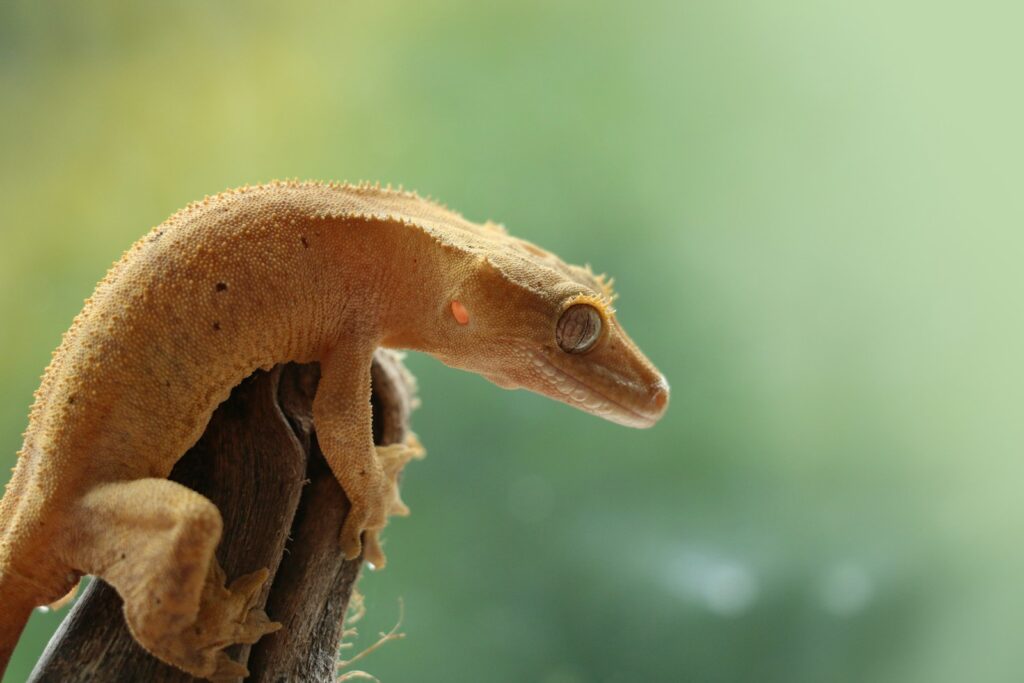
Commercial Crested Gecko Diet (CGD) forms the foundation of most captive crested gecko feeding programs and has revolutionized gecko care. These specially formulated powder diets contain precise ratios of proteins, carbohydrates, vitamins, and minerals specifically tailored to meet crested gecko nutritional requirements. Leading brands include Pangea, Repashy, and Zoo Med, each offering various flavors and formulations to entice picky eaters. The powdered diet is mixed with water to create a smoothie-like consistency that geckos can easily lap up with their tongues. Most experienced keepers recommend that CGD should constitute approximately 80-90% of an adult crested gecko’s diet, as these commercial preparations are scientifically designed to provide complete nutrition.
Fruit-Based Diets and Fresh Options
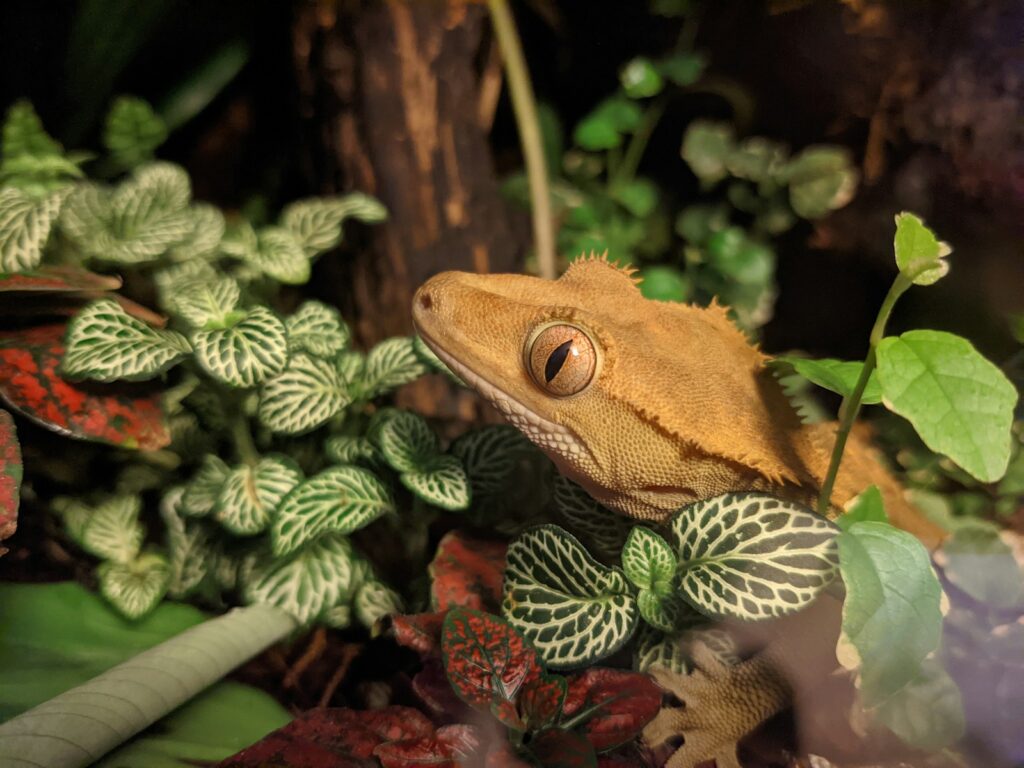
While commercial diets form the core nutritional foundation, fresh fruits can be offered as occasional supplements to provide enrichment and additional nutrients. Appropriate fruits for crested geckos include ripe mango, papaya, peach, and fig – all of which mirror the tropical fruits they might encounter in their native habitat. When offering fresh fruit, it’s essential to mash it into a smooth consistency that geckos can easily consume and to remove any seeds or skin that could pose a choking hazard. Fresh fruits should constitute no more than 10-20% of the overall diet to prevent nutritional imbalances, particularly concerning calcium-to-phosphorus ratios. Additionally, fruits high in oxalates (like strawberries) should be limited as they can interfere with calcium absorption.
Insects as Protein Sources
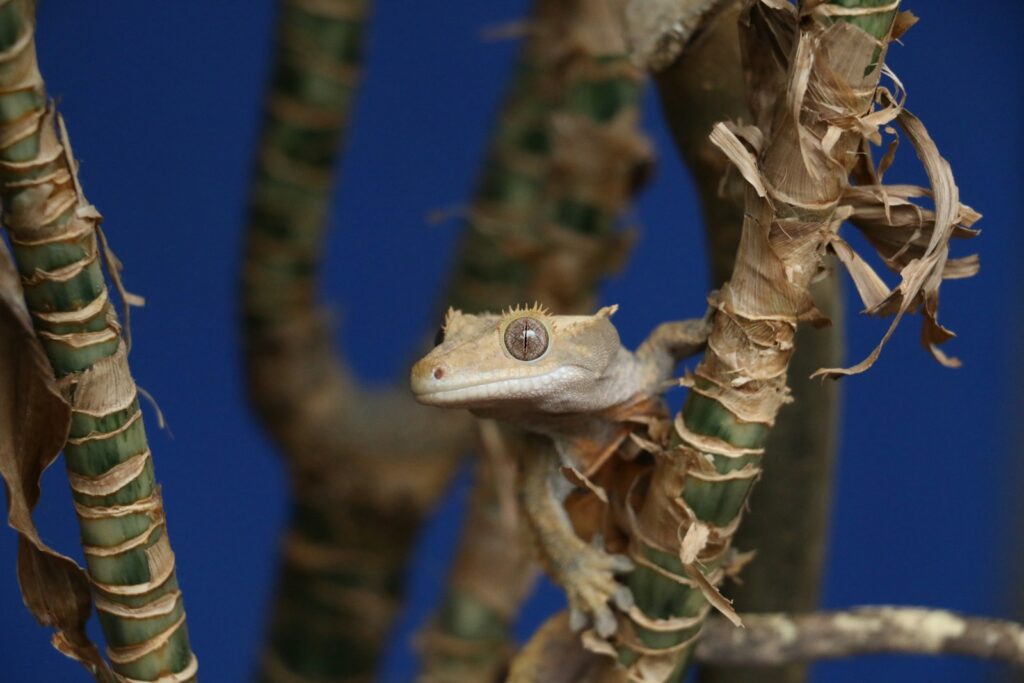
Supplementing your crested gecko’s diet with live insects provides behavioral enrichment and additional protein that supports growth, especially in juvenile geckos. Small crickets, dubia roaches, and flightless fruit flies are excellent choices that mimic the prey items crested geckos would naturally hunt. Before feeding insects to your gecko, they should be “gut-loaded” by feeding them nutritious foods for 24-48 hours, essentially turning them into living vitamin capsules. Additionally, insects should be dusted with a high-quality calcium supplement to address the calcium-to-phosphorus imbalance inherent in most feeder insects. For adult crested geckos, insects should represent approximately 10-20% of the overall diet, while juveniles may benefit from slightly higher insect proportions to support their rapid growth.
Feeding Schedule and Portion Control
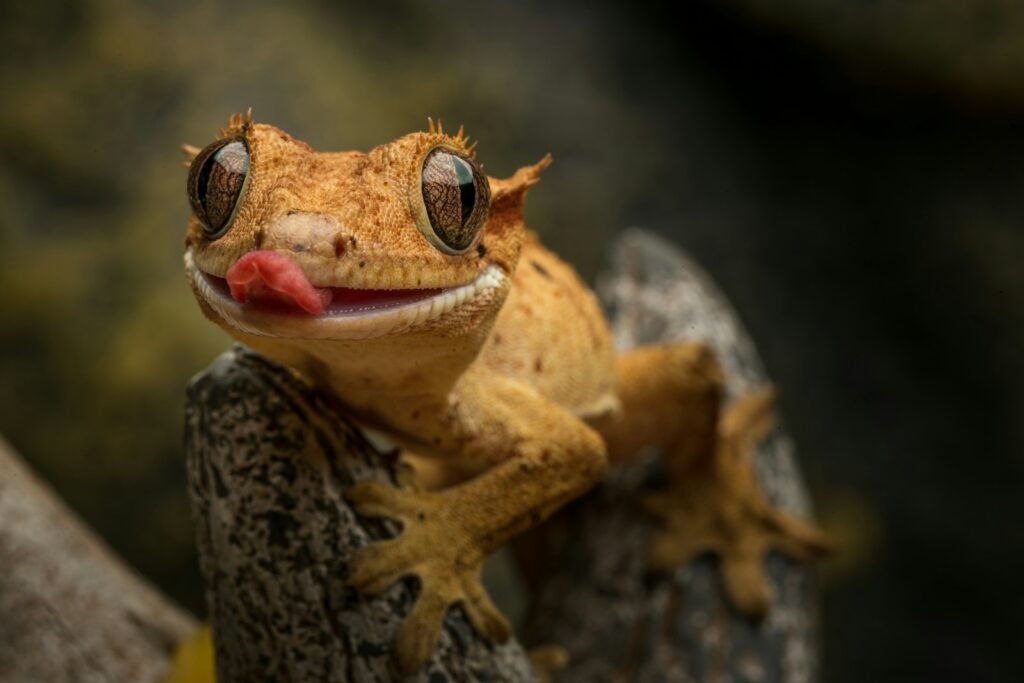
Establishing a consistent feeding schedule helps maintain your crested gecko’s metabolic health and prevents obesity, a common issue in captive reptiles. Adult crested geckos typically thrive with fresh CGD offered every other day, while growing juveniles benefit from daily feeding. The appropriate portion size for most adult crested geckos is approximately 1-2 teaspoons of prepared CGD per feeding, adjusted based on the individual gecko’s size and metabolic rate. Food dishes should be shallow enough for easy access but designed to prevent the gecko from tracking through and contaminating their food. Any uneaten CGD should be removed after 24 hours to prevent bacterial growth, while fresh fruits and insects should be removed after several hours if not consumed.
Calcium and Vitamin Supplementation
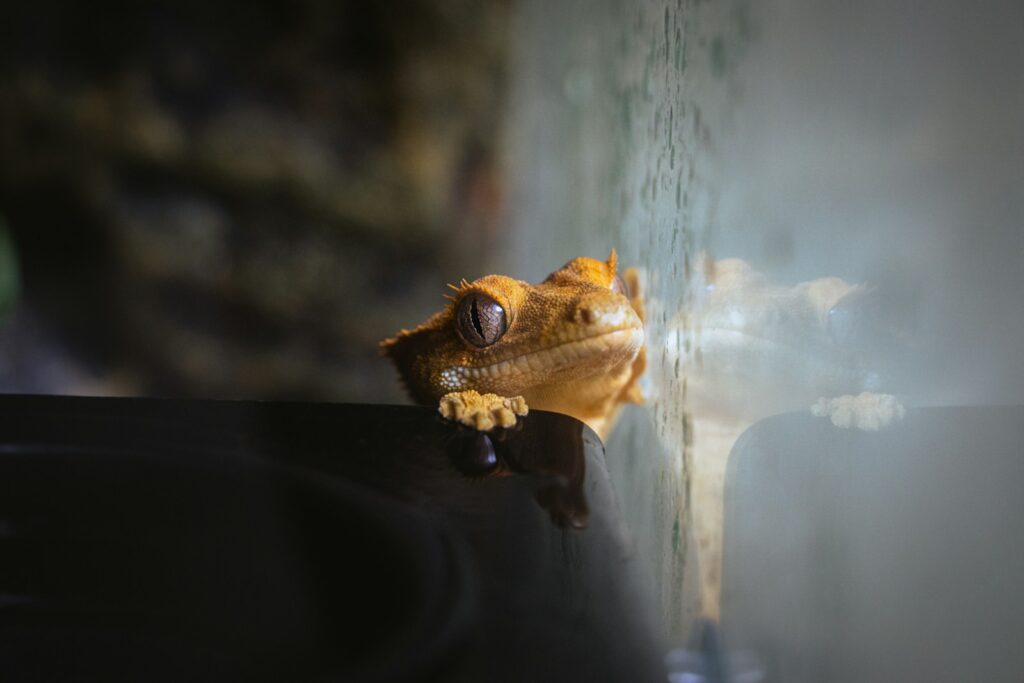
Proper mineral balance is critical for preventing metabolic bone disease, a serious condition that affects many captive reptiles with inadequate calcium intake or vitamin D3 insufficiency. While quality commercial gecko diets contain balanced calcium levels, supplementation becomes particularly important when offering fresh fruits or insects. A calcium supplement without phosphorus (calcium carbonate) should be used to dust feeder insects before offering them to your gecko. For geckos housed without UVB lighting, which is common in many crested gecko setups, a calcium supplement containing vitamin D3 is essential as it facilitates calcium absorption. Additionally, a general reptile multivitamin can be used sparingly (once every 1-2 weeks) to ensure complete nutritional coverage, though over-supplementation must be avoided as fat-soluble vitamin toxicity is possible.
Hydration Requirements

Proper hydration is crucial for crested geckos, affecting everything from skin health to proper digestion and waste elimination. Unlike some desert-adapted reptiles, crested geckos come from a humid tropical environment and require regular access to clean water. A shallow water dish should always be available in the enclosure, though many crested geckos primarily obtain their moisture from licking water droplets during misting rather than drinking from standing water. The prepared commercial gecko diet also provides significant hydration, as it typically contains about 70-80% water when mixed according to package directions. Daily misting of the enclosure not only maintains appropriate humidity levels but also provides drinking opportunities that mirror the gecko’s natural behavior of licking dew and raindrops from foliage.
Foods to Avoid
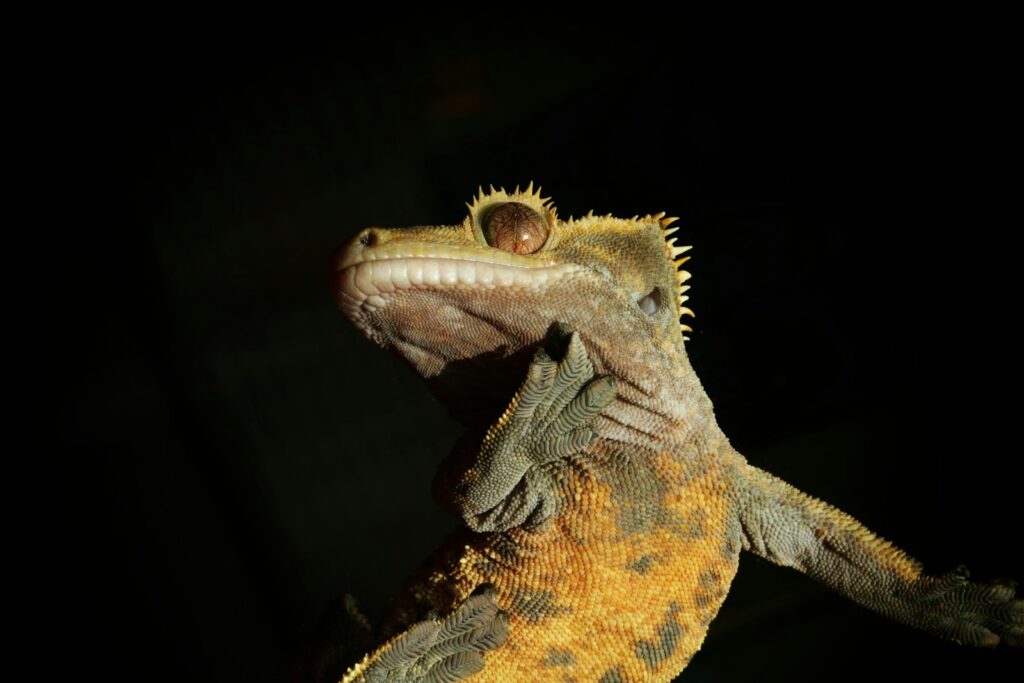
Understanding which foods are harmful to crested geckos is just as important as knowing what to feed them. Certain fruits like citrus (lemons, limes, oranges) should be avoided due to their high acidity, which can cause digestive upset in these sensitive reptiles. Avocados contain persin, a fungicidal toxin that can be harmful to many reptiles including crested geckos. Wild-caught insects should never be fed to geckos as they may contain pesticides or parasites that could cause serious health issues. Additionally, fireflies and lightning bugs contain toxins that are fatal to reptiles and should be strictly avoided. Any insect larger than the space between the gecko’s eyes presents a choking hazard and should not be offered, regardless of the species of feeder insect.
Special Considerations for Juvenile Geckos

Juvenile crested geckos have slightly different nutritional requirements compared to their adult counterparts, primarily due to their rapid growth rate. Young geckos benefit from higher protein content in their diet, which supports proper development of muscles and organs. For this reason, many keepers choose commercial gecko diets specifically formulated for growth, such as Pangea Growth & Breeding formula or Repashy Grubs ‘n’ Fruit. Juvenile crested geckos should be fed daily rather than every other day, as their faster metabolism and growth demands require more frequent nutritional intake. Size-appropriate feeder insects, such as small crickets or flightless fruit flies, can be offered more frequently to juveniles (2-3 times weekly) compared to adults, always ensuring they are properly gut-loaded and calcium-dusted.
Seasonal Dietary Adjustments
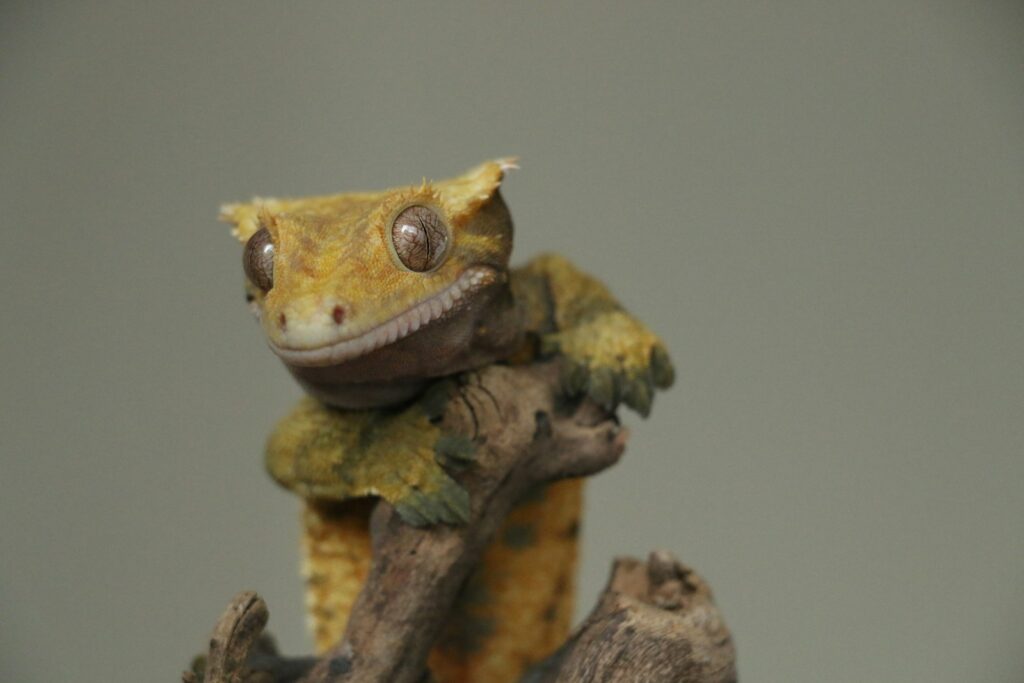
While not strictly necessary for captive crested geckos, some advanced keepers incorporate seasonal changes into their feeding regimen to better mimic natural conditions. During the warmer months that would correspond to the breeding season in the wild, protein content can be slightly increased through additional insect feedings or higher-protein commercial diet formulations. For geckos being prepared for brumation (a period of reduced activity during cooler months) or those experiencing natural seasonal appetite fluctuations, feeding frequency might be gradually reduced while maintaining nutritional quality. Keepers in areas with significant seasonal humidity changes may notice corresponding shifts in their gecko’s water consumption, necessitating more frequent misting during drier periods. These subtle adjustments can help support the gecko’s natural biological rhythms and potentially improve overall health and breeding success.
Monitoring Weight and Health
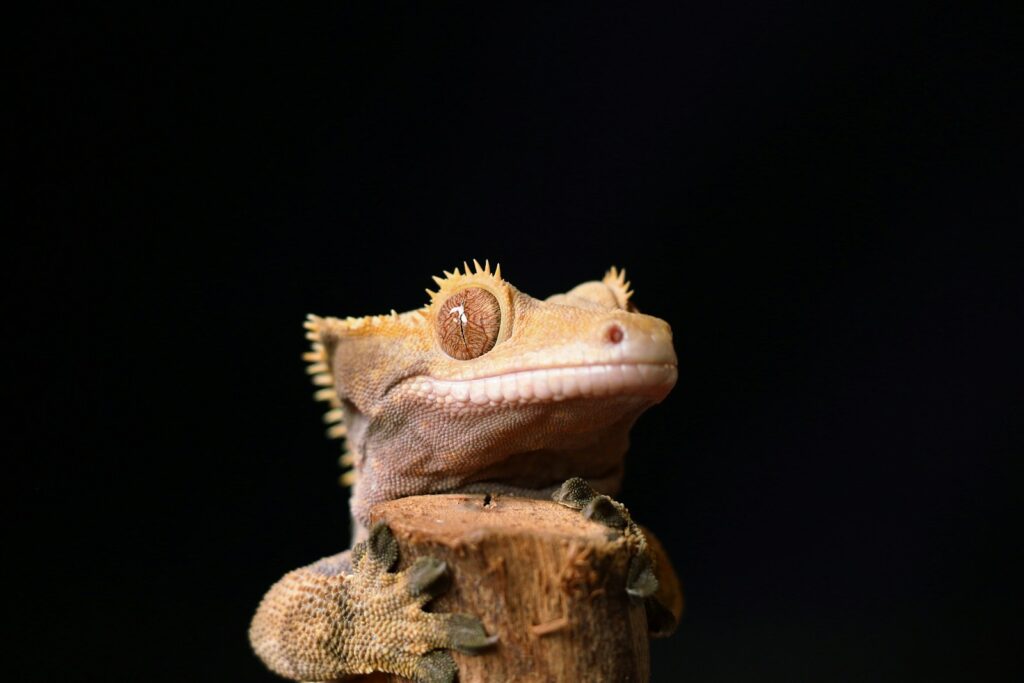
Regular monitoring of your crested gecko’s weight and body condition provides valuable feedback about the effectiveness of your feeding regimen. A healthy adult crested gecko typically weighs between 35-55 grams, though there is considerable variation based on genetics and sex, with females often being slightly heavier than males. Weight should be checked monthly using a digital scale, with records kept to track trends over time. Visual assessment is equally important – a healthy crested gecko should have a slightly plump tail base (though not as substantial as when they were originally named “crested fat-tailed geckos”) and a body where the spine and hip bones are not prominently visible. Abnormal weight loss, consistent refusal to eat, or dramatic weight gain all warrant investigation and potentially veterinary consultation, as they may indicate underlying health issues or inappropriate diet.
Addressing Common Feeding Problems
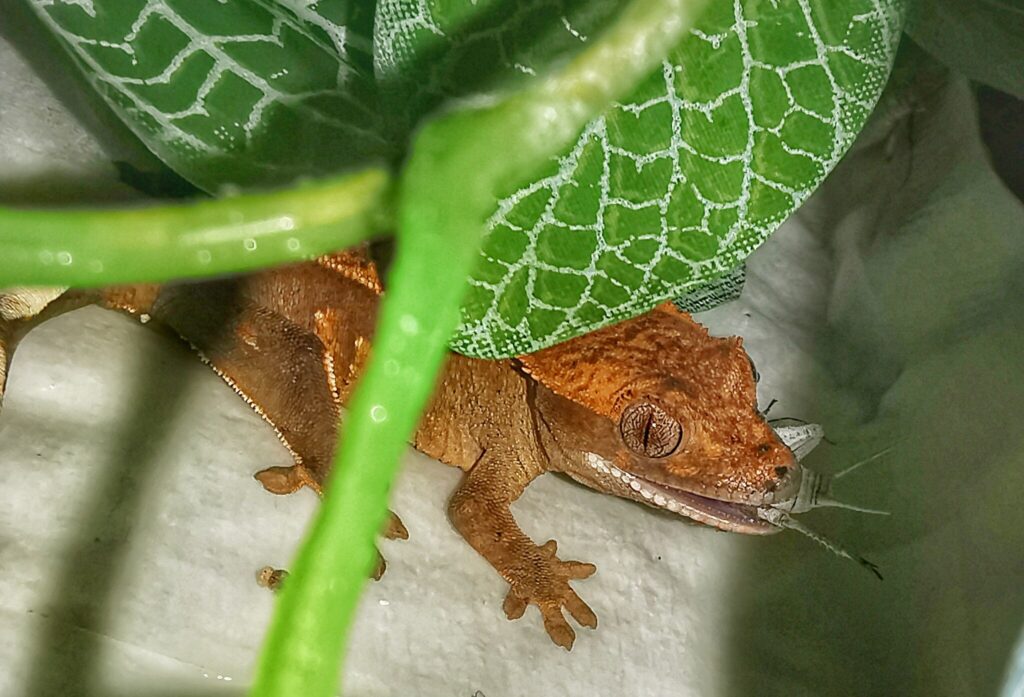
Even with optimal diets, some crested geckos develop feeding challenges that require special attention and problem-solving. Picky eaters may benefit from rotational feeding of different CGD flavors to prevent flavor fatigue, with fruit-based flavors like banana and papaya often being most readily accepted. For geckos refusing commercial diets entirely, a temporary transition strategy might involve mixing small amounts of fruit baby food (without additives) into the CGD to entice feeding, gradually reducing this addition as the gecko accepts the commercial diet. Stress-related feeding issues commonly occur after relocation or enclosure changes; these typically resolve by ensuring hide spaces are adequate and minimizing disturbances during the gecko’s active evening hours. For geckos with continued feeding problems, examining temperatures is crucial, as environments that are too cool (below 72°F) or too warm (above 80°F) can significantly reduce appetite in these temperature-sensitive reptiles.
DIY Diet Options and Recipes

While commercial diets provide the most reliable nutrition, some experienced keepers develop supplemental homemade mixtures to provide variety in their gecko’s diet. A basic homemade gecko smoothie might include a base of calcium-rich baby food (such as papaya or mango) combined with a complete protein source like egg white powder or cricket protein powder. Critical to any homemade diet is proper calcium supplementation, typically at a ratio of about 2% of the total mixture by weight. For keepers pursuing this option, a kitchen scale and careful measurement of ingredients are essential, as is the recognition that homemade diets should generally complement rather than replace commercial formulations entirely. Advanced keepers sometimes develop complex recipes involving multiple fruit purees, bee pollen, spirulina, and insect protein sources, though these require considerable nutritional knowledge to ensure proper balance of all essential nutrients.
Transitioning Between Diet Types
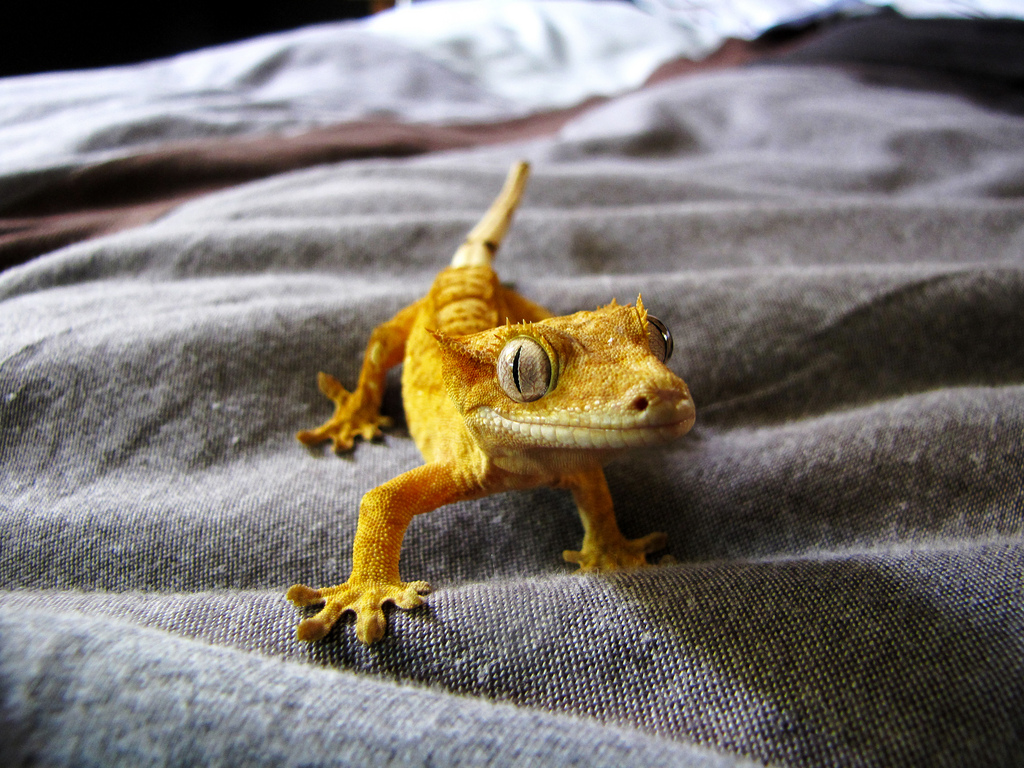
Changes to your crested gecko’s diet should always be implemented gradually to prevent digestive upset and food refusal. When transitioning from one commercial diet brand to another, mixing the old and new foods in progressively changing ratios over 2-3 weeks gives the gecko’s digestive system time to adjust to different ingredients. For geckos previously fed a suboptimal diet (such as primarily fruit or insects), the transition may take longer, sometimes requiring intermediate steps like mixing fruit with increasing amounts of commercial diet. Monitoring fecal output during diet transitions provides valuable information about digestive health, with consistent, well-formed droppings indicating proper digestion. Some geckos display initial resistance to new foods, making patience and persistence key virtues during dietary transitions – continuing to offer the new food consistently while ensuring the gecko doesn’t lose weight during the adjustment period.
Conclusion

Providing appropriate nutrition for crested geckos involves understanding their natural dietary patterns and recreating these in captivity through a thoughtful combination of commercial diets, occasional fruits, and supplemental insects. The foundation of a healthy crested gecko diet should be a high-quality commercial crested gecko diet, supplemented strategically with fresh fruits and gut-loaded, calcium-dusted insects. By establishing consistent feeding routines, monitoring your gecko’s weight and health, and making adjustments as needed, you can ensure your pet receives optimal nutrition throughout its life. Remember that each gecko is an individual with unique preferences and needs – what works perfectly for one might need modification for another. With proper nutrition, your crested gecko can thrive for 15-20 years, rewarding your care with their charming personality and fascinating behaviors.

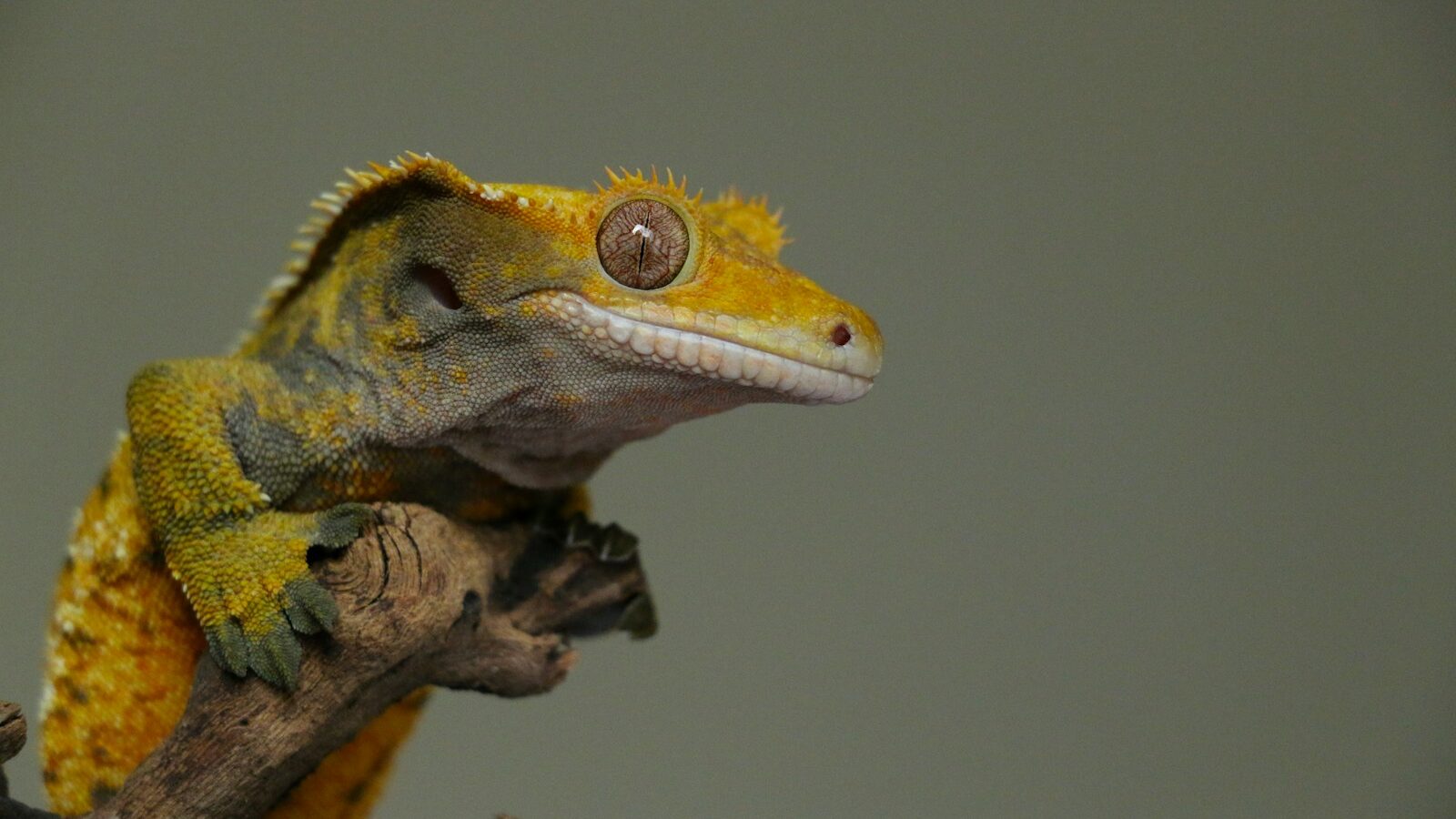
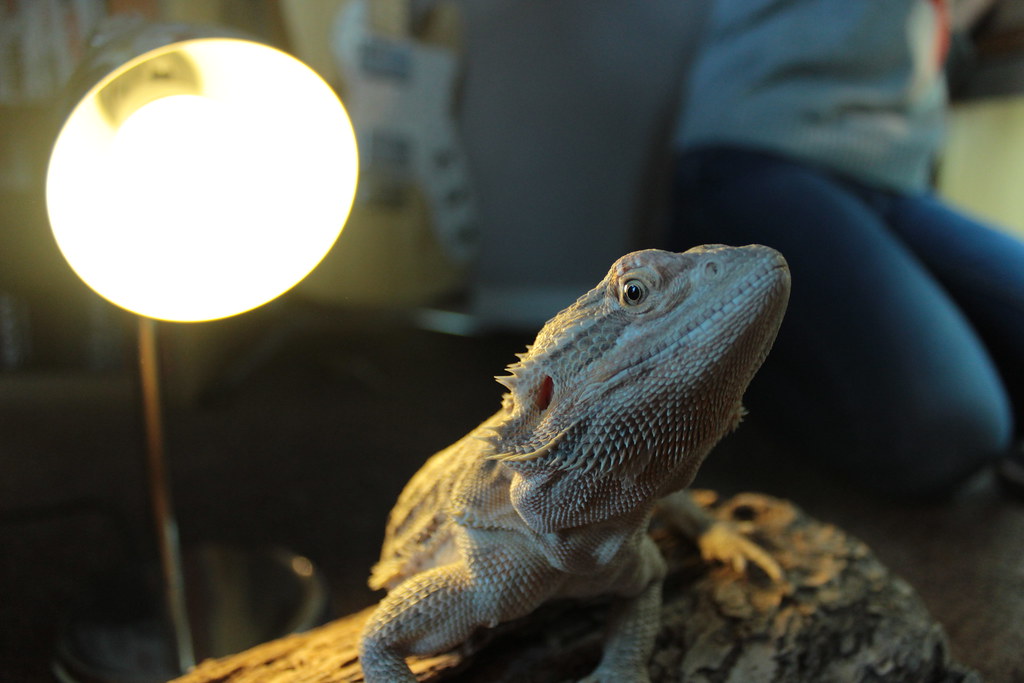
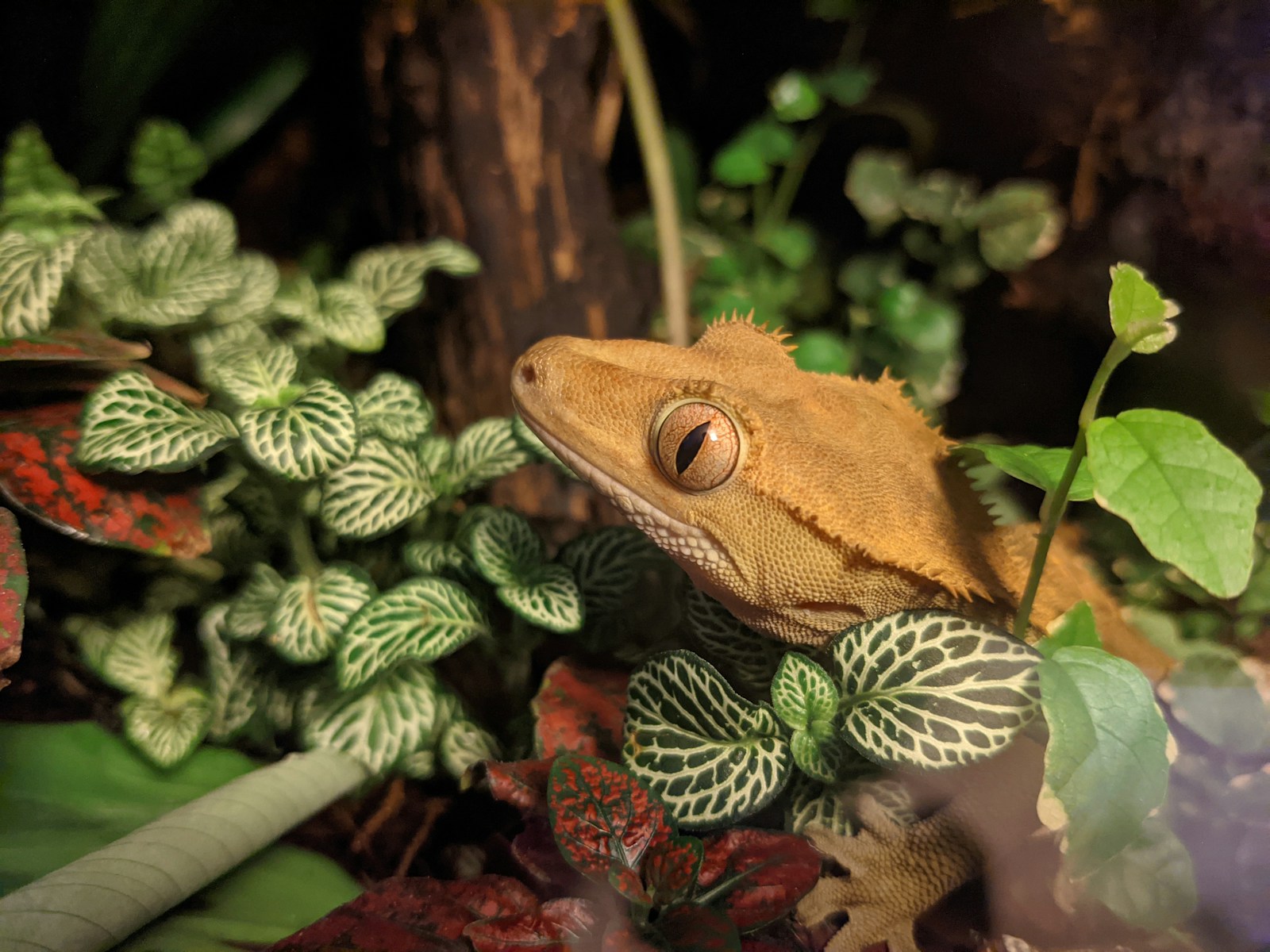

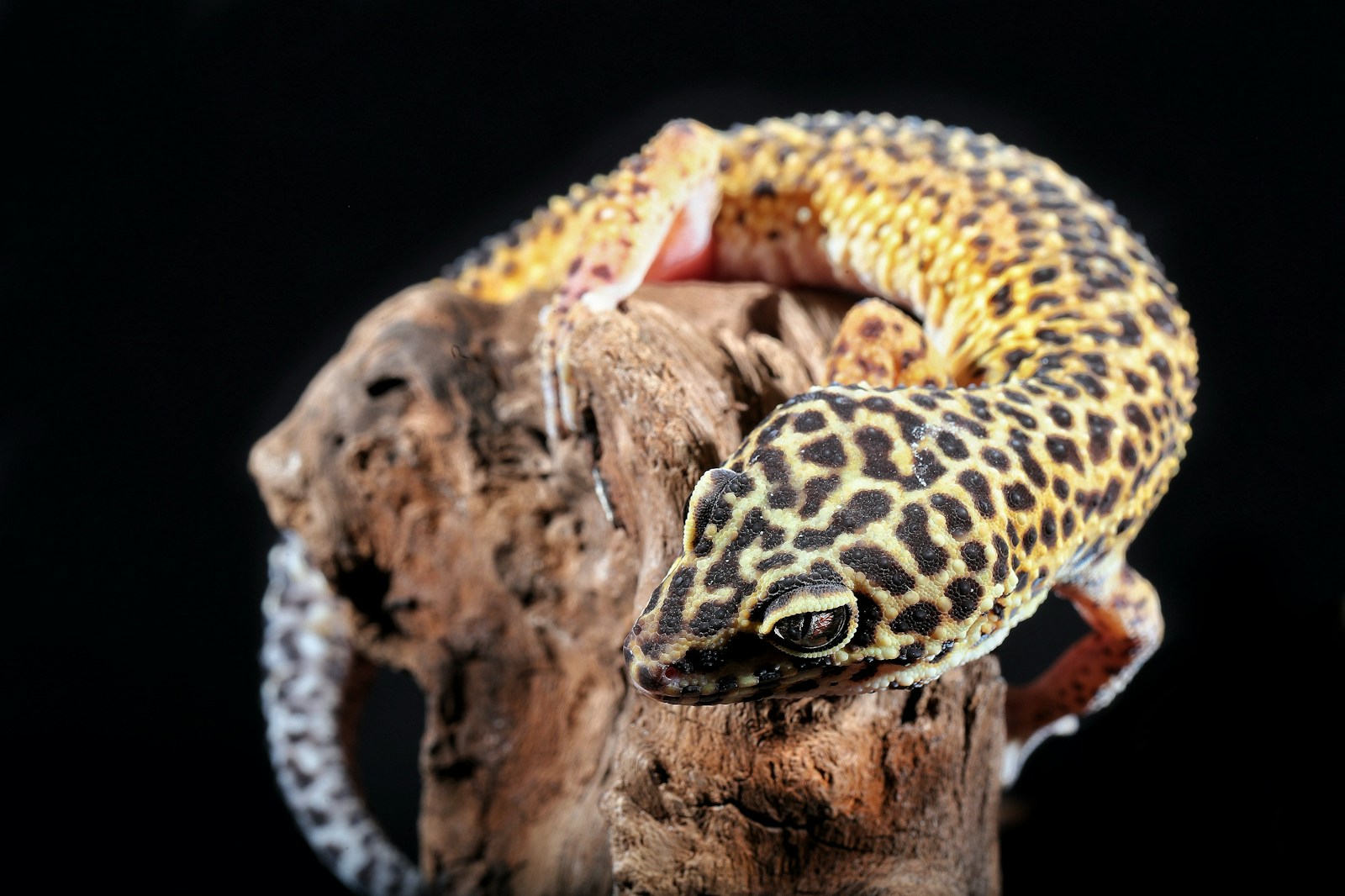

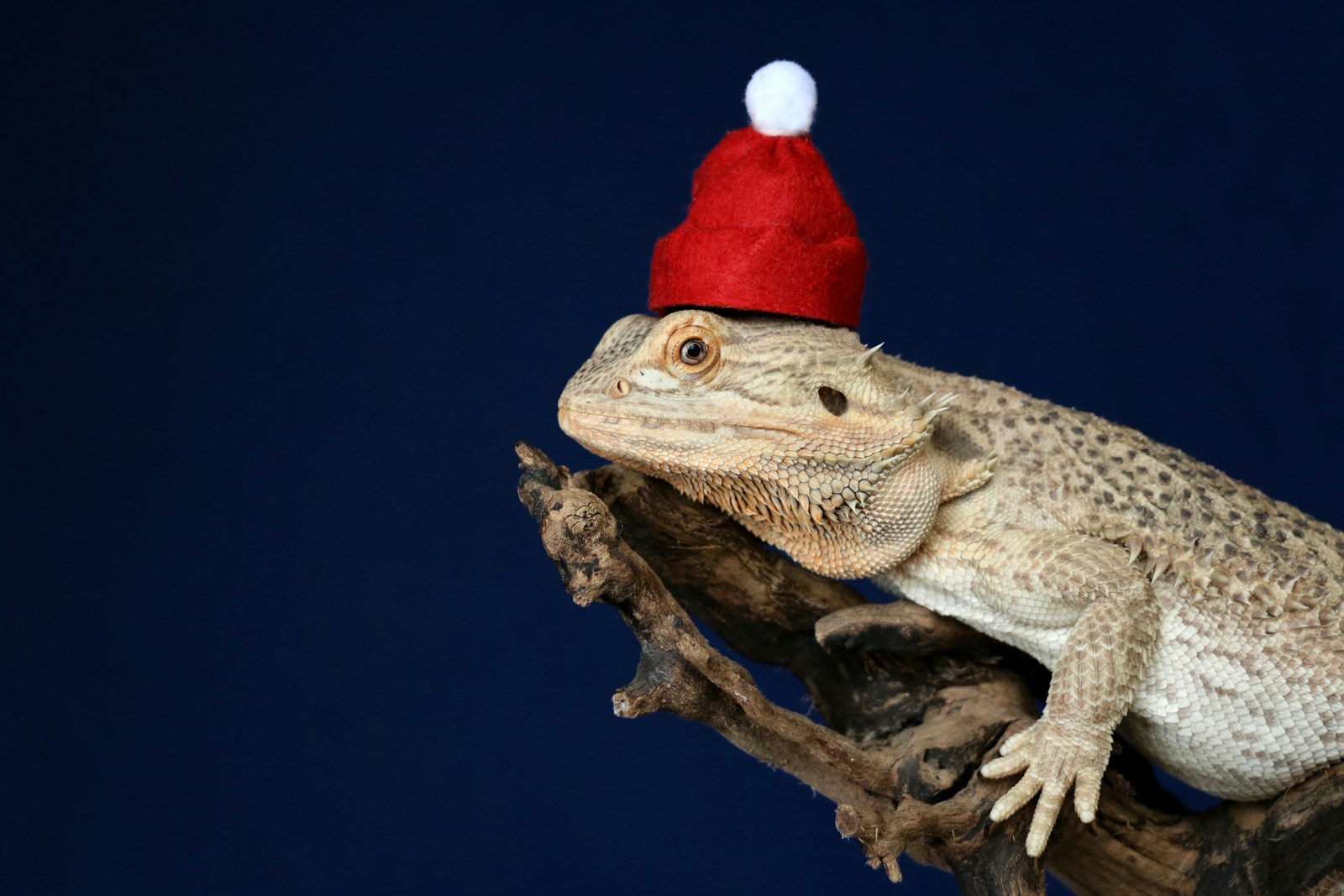

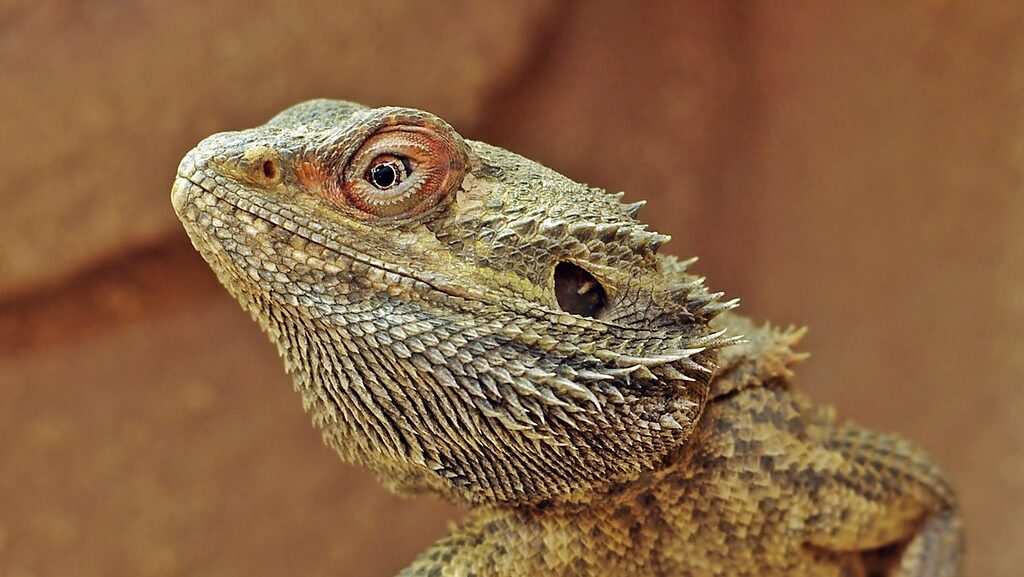
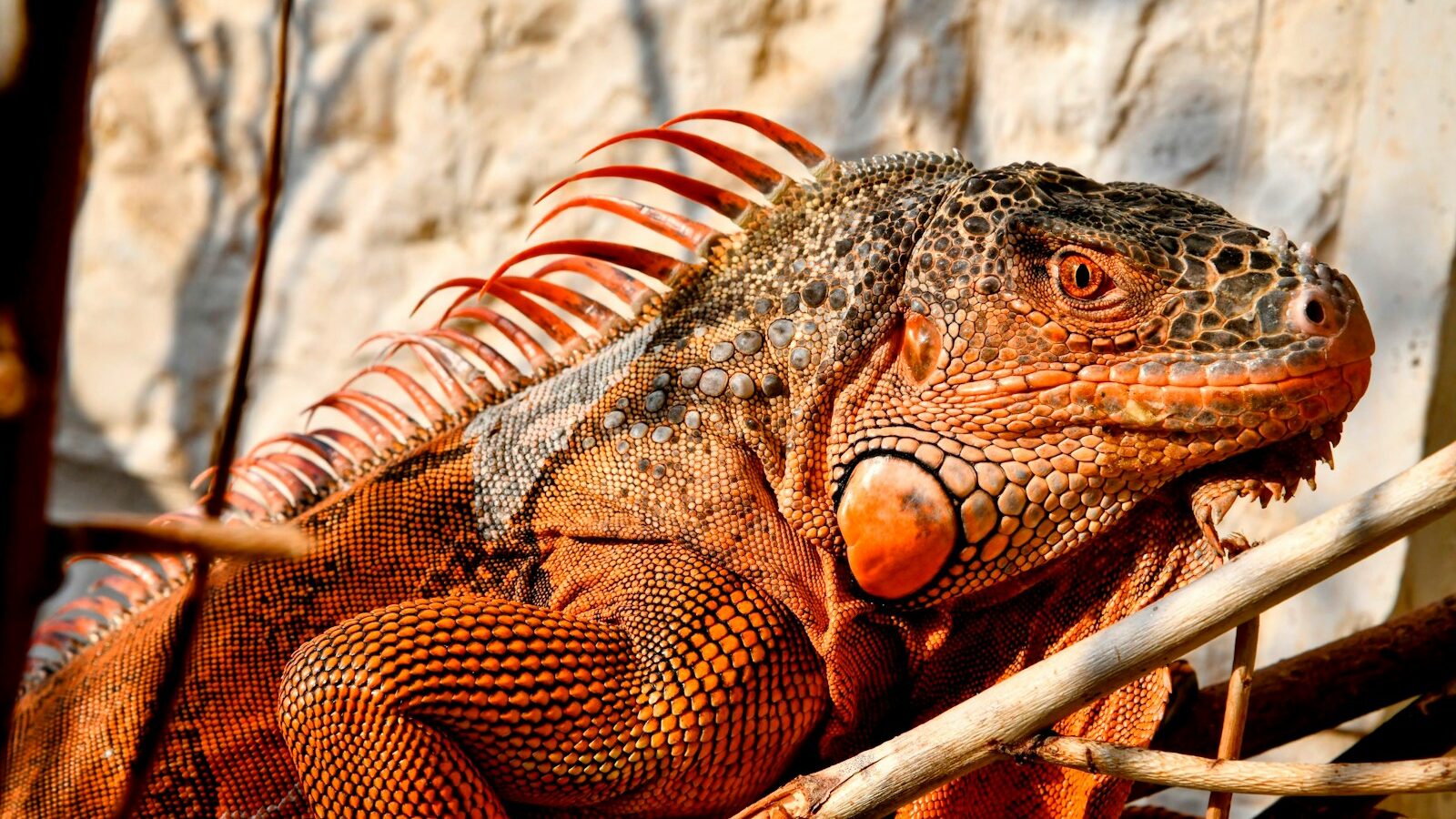
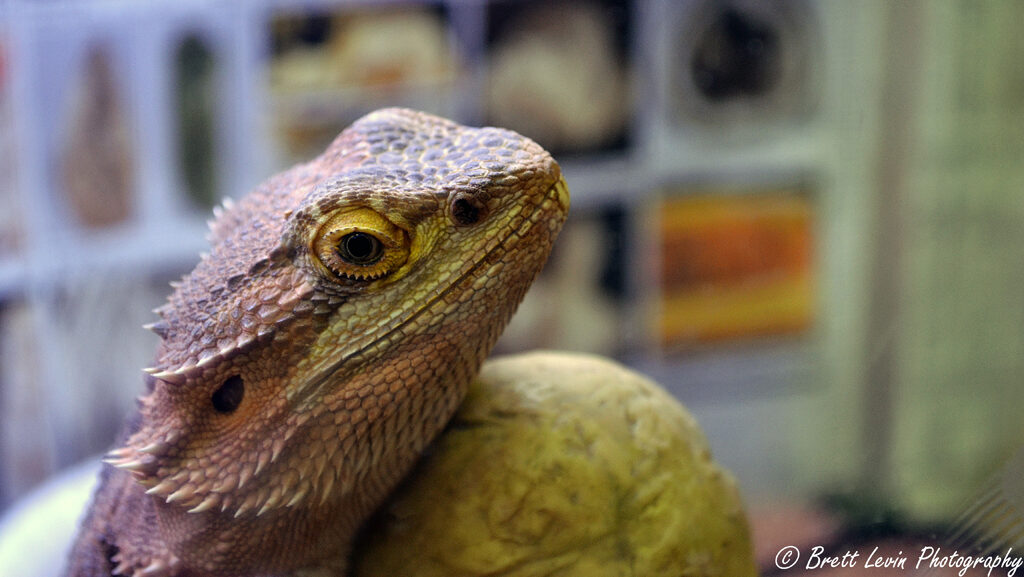
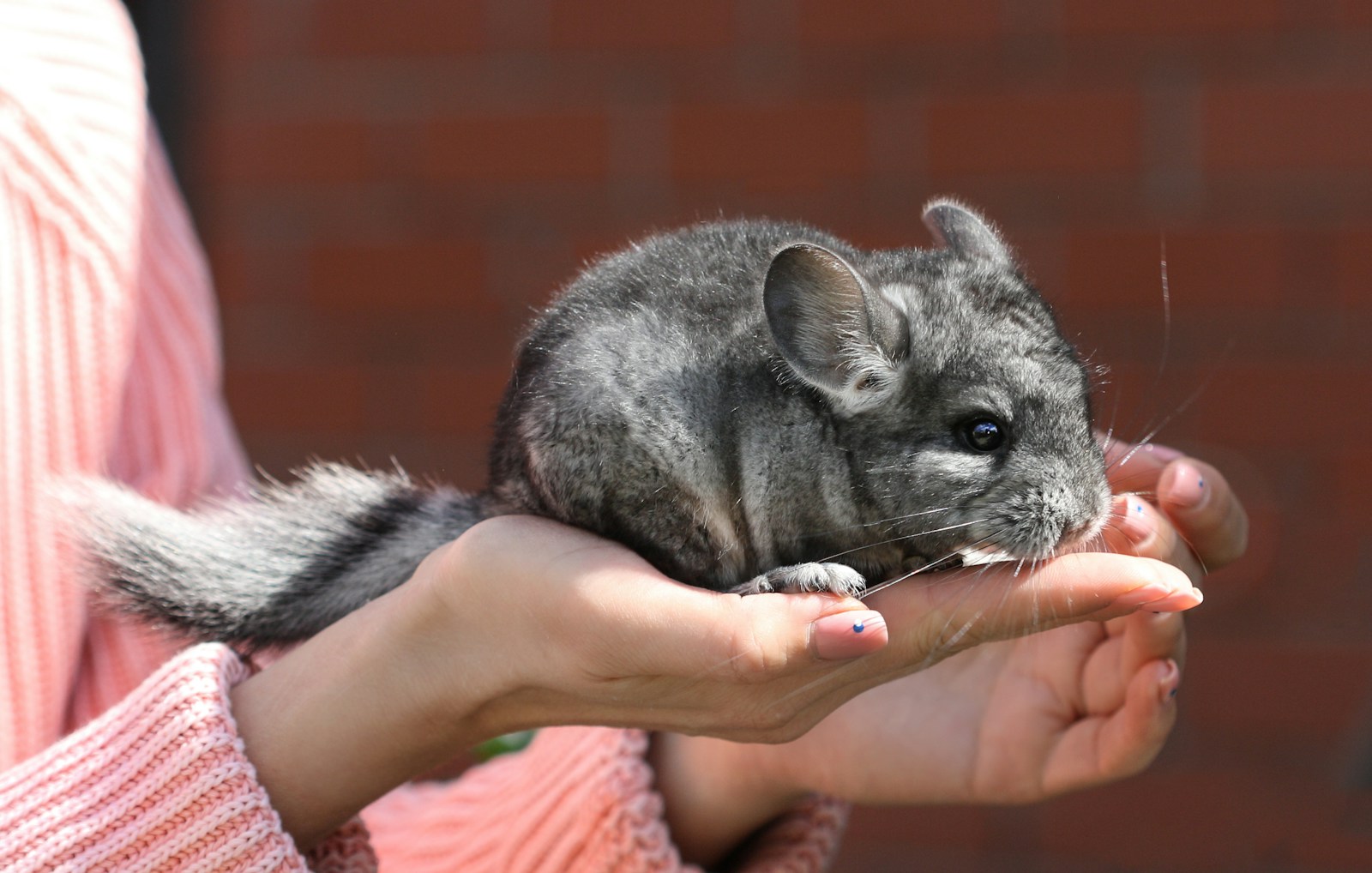

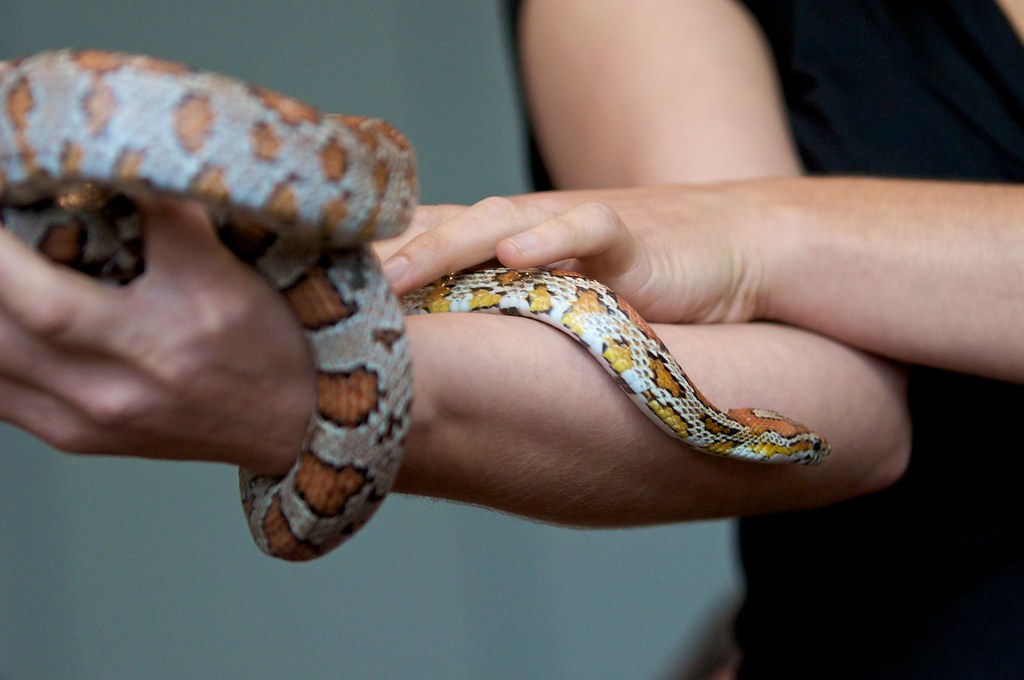
Leave a Reply